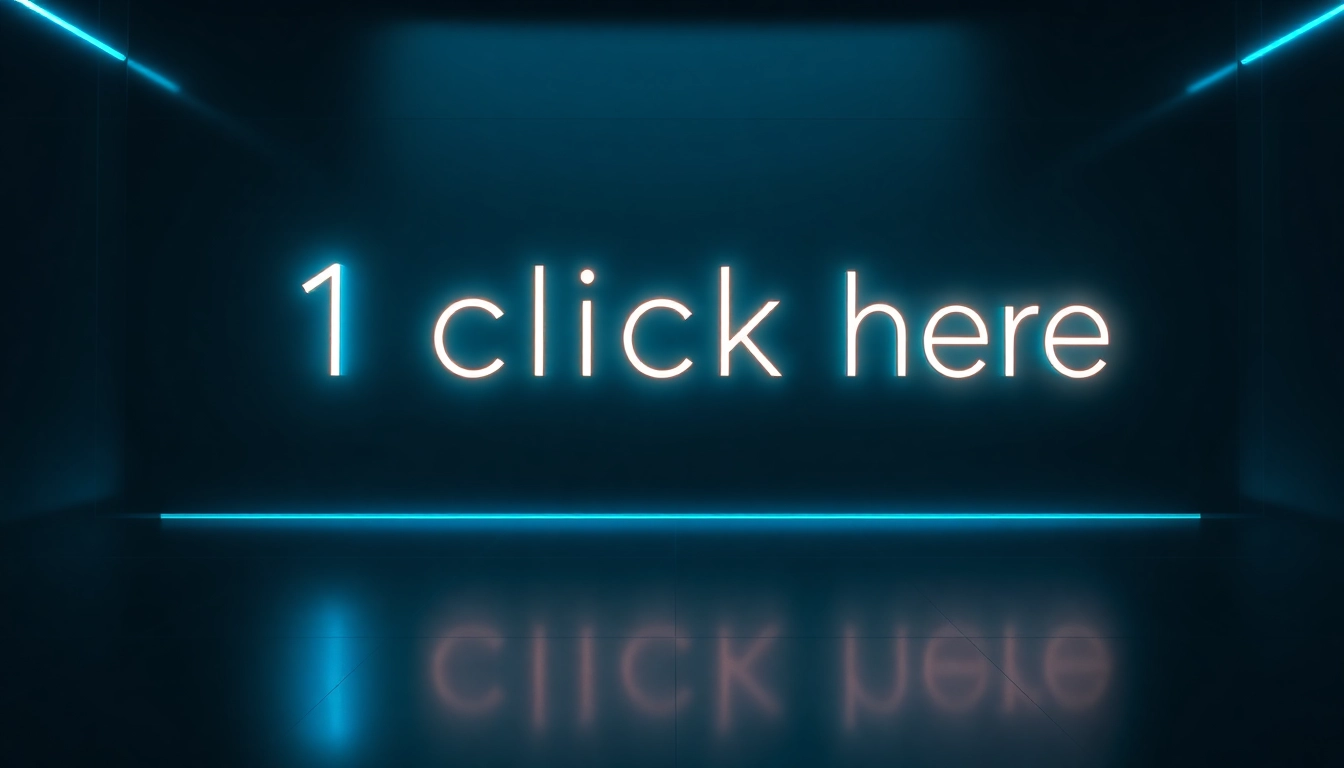Streamlining Your Experience with 1click Here: The Future of Effortless Navigation
The evolution of technology has transformed the way we interact with digital platforms, particularly in e-commerce and online navigation. One-click technology exemplifies this evolution, allowing users to perform actions with minimal effort—a single click can lead to an array of functionalities or seamless transactions. The overarching goal is to enhance user experience by reducing the friction typically associated with online activities. This technology isn’t just limited to e-commerce; it has implications across various sectors, including digital content consumption, app installations, and even social media interactions. For instance, by employing the one-click technology on platforms like 1click here, businesses can streamline their processes and improve customer satisfaction. The primary benefit of one-click technology is its ability to simplify user interactions. This technology is designed to make online experiences quicker, more intuitive, and less cumbersome. Additionally, it can significantly enhance conversion rates for businesses. Some key benefits include: At its core, one-click technology works by pre-storing user data and preferences, which eliminates the need for re-entering information for frequent actions. The typical process involves: Implementing one-click technology requires the selection of appropriate tools that can facilitate seamless integration into your existing system. Factors to consider include compatibility with your current platform, ease of implementation, and security measures. Here are some tools and technologies that can aid in creating a robust one-click experience: To successfully implement one-click technology, follow these critical steps: While implementing one-click functionality can yield substantial benefits, several pitfalls may arise, including: Several businesses have successfully implemented one-click technology, achieving remarkable results: For example, an online retail platform witnessed a 30% increase in sales after integrating a one-click purchasing feature, which allowed customers to buy items without the hassle of filling out lengthy forms. By analyzing user behavior, they adapted their interface to facilitate a quicker transaction process, thus streamlining navigation significantly. Enhanced customer experience is one of the most notable achievements stemming from this technology. A popular streaming service implemented a one-click subscribe feature, which resulted in a 40% uplift in the subscription rate. Users appreciated how they could join the service in just one tap, quickly accessing millions of hours of content without unnecessary hurdles. Data plays a crucial role in assessing the success of one-click systems. One e-commerce giant monitored user interaction and A/B tested the one-click feature, leading to a significant reduction in cart abandonment rates. By adjusting their interface and employing persuasive design tactics, they achieved higher transaction completion rates, thus directly boosting their bottom line. To ensure the optimized performance of one-click features, it is essential to analyze user engagement metrics continuously. Key performance indicators (KPIs) to focus on include: Implementing one-click technology is not a one-time effort; it requires ongoing adjustments and improvements based on user feedback and behavior: Feedback integration is essential for enhancing usability. Gather user data via surveys, focus groups, and analytics tools to identify areas of improvement. Pay close attention to how users respond to the one-click feature, noting any common complaints or suggestions. This responsive approach allows for user-centered design, ensuring that the platform evolves according to user needs. The realm of one-click technology continues to evolve. Future innovations expected in this area include: As exciting as the future may be, it is also accompanied by challenges. Stakeholders must consider: As we look forward to the next generation of user experience, businesses must stay agile and adaptable. By anticipating technological changes and consumer expectations, they can position themselves for success. Continuous investment in user research and data analysis will remain paramount in providing relevant, engaging, and secure experiences for users far into the future.Understanding the Concept of 1click Here
Introduction to One-Click Technology
Benefits of Using 1click Here
How It Works: A Technical Overview
Implementing 1click Here in Your Platform
Choosing the Right Tools
Step-by-Step Implementation Guide
Common Pitfalls and How to Avoid Them
Case Studies: Success Stories of 1click Here
Businesses Transforming Navigation
Customer Experiences Enhanced by 1click Here
Data-Driven Results from Implementation
Optimizing Performance of 1click Here Features
Analyzing User Engagement Metrics
Continuous Improvement Strategies
Integrating Feedback for Enhanced Usability
The Future of 1click Here: Trends and Predictions
Innovations Forecasted in One-Click Technology
Potential Challenges and Considerations
Preparing for the Next Generation of User Experience


0 Comment